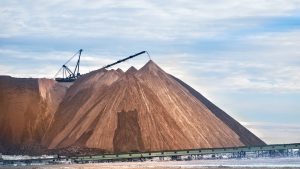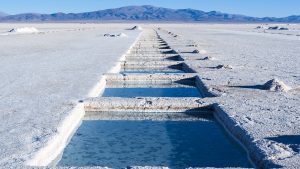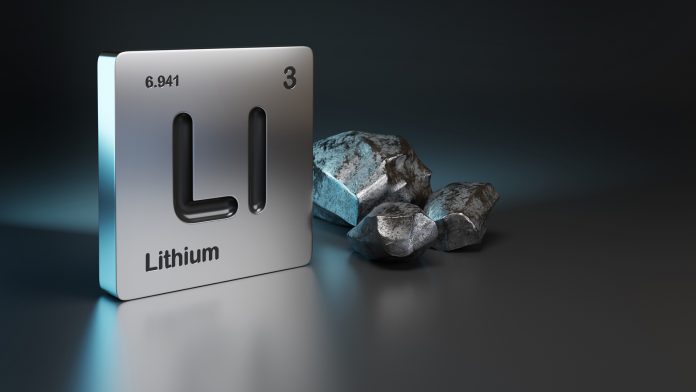Lithium is a crucial component in the switch to renewable energy, but the extraction process of this critical mineral has been costly to the environment.
Lithium arguably plays the most important role in ditching fossil fuels and ensuring the world can move towards a zero-carbon future. The lightweight metal is found in rechargeable lithium-ion batteries, which are used in most personal electronics and most importantly, electric vehicles (EVs).
The demand for EVs has seen a huge increase in recent years, with companies scrambling to target multiple lithium exploration projects to ensure lithium supply can meet demand. However, in order to ensure the safety of our planet, lithium extraction methods must be done in an environmentally sensitive way that causes as little damage.
Any type of resource extraction is harmful to the planet, with removal of raw materials resulting in oil degradation, water shortages, biodiversity loss, damage to ecosystem functions, and an increase in global warming.
The Innovation Platform takes a look at why lithium extraction is bad for the environment and how companies are ensuring their extraction methods are eco-friendly so that we can meet the ever-growing demand for lithium.
The increasing demand for lithium
Lithium demand is higher than ever, with calls for at least $42bn in lithium investment over the next six years in order to meet 2030’s goal of 2.4 million tonnes of lithium production per year.1
The demand for lithium is so high due to its integral role in EV batteries. EVs are becoming increasingly common on our roads, with over two million vehicles sold in 2018 alone.
The growing interest in lithium has seen the world’s largest-known reserves increase significantly. According to the US Geological Survey, there are around 80 million tonnes of identified reserves globally.2
Lithium is irreplaceable for the high-energy batteries that power portable electronics and electric vehicles. It has a unique position on the periodic table, offering high voltage and high capacity that cannot be replicated by other metals. A select few battery technologies have shown potential to one day replace today’s lithium-ion batteries. These new batteries are based on lithium metal and lithium silicon anodes, which improve performance but also increase lithium usage per kilowatt-hour.
After South America – mainly Bolivia, Chile, and Argentina – the next biggest lithium-producing country is the US, followed closely by Australia and China. In 2019, lithium exports from Australia were reported to have totalled almost $1.6bn.
Lithium is mainly sourced from either spodumene or brine. Australia is home to the majority of hard rock (spodumene) mines, while brine production is concentrated in South America, mainly in Chile and Argentina.
Lithium carbonate and lithium hydroxide are the two lithium compounds employed for battery cathode production, with carbonate currently making up the bulk of usage. In brine production, lithium chloride is extracted from alkaline brine lakes before being converted to carbonate.
With this in mind, it is crucial to explore how these different extraction methods impact our planet and ecosystems.
Why is lithium extraction bad for the environment?
Despite its potential to power a net-zero future, lithium extraction methods can cause great damage to the environment, with the metal often described as the non-renewable mineral that makes renewable energy possible. Extraction of the product causes several environmental defects, including water contamination and increasing carbon dioxide emissions.

According to a report by Friends of the Earth, lithium extraction inevitably harms the soil and causes air contamination.3 The report states: “As demand rises, the mining impacts are increasingly affecting communities where this harmful extraction takes place, jeopardising their access to water.”
This is especially dangerous in South America, which is a key supplier of lithium. The countries’ salt flats are located in arid territories, which means access to water is crucial for the local community. Chile is a country that particularly suffers as a result of lithium extraction. Mining that takes place in the Atacama salt flats consumes, contaminates, and diverts scarce water resources away from local communities.
Once lithium is extracted from salt flats, it needs to be produced through evaporation ponds to convert it to its final state. Evaporation ponds use a huge amount of water, around 21 million litres per day. Approximately 2.2 million litres of water is needed to produce one ton of lithium. This means that water-related disputes have arisen in many key lithium-producing countries.
Additionally, the whole lithium extraction process contributes to an increase in carbon dioxide (CO2) emissions. Miners cut down trees in order to access extraction sites and remove any obstructions. Because trees and plants play an important role in removing excess carbon emissions from the air, mining processes hinder these processes and leave a build-up of toxic substances in our atmosphere.
Moreover, miners also use heavy machinery, which consumes a lot of energy and produces toxic gases, including CO2.
Therefore, miners’ lack of clean energy use to extract lithium is heavily detrimental to the planet. It is crucial that companies address these damages and look to use extraction methods that are better for the planet.
Can environmentally sensitive extraction methods overcome these issues?
Whether or not companies can meet the demand for lithium rests on innovative and environmentally friendly methods. So, what initiatives are companies currently taking to meet the demand for lithium while also preserving our environment and ecosystems?
As the world moves toward a future of clean and sustainable energy, many companies within the lithium industry are resonating with their markets to achieve a more environmentally friendly world.
One example is Direct Lithium Extraction (DLE). Used by a number of businesses in the lithium industry, the technology uses an improved selective absorbent and a radical engineering concept in order to produce high-quality lithium.
DLE is a promising solution to the environmental defects of lithium extraction. Its unique selective absorption technology eliminates solar evaporation ponds, salt piles, and lime plants from the extraction process. This preserves and protects water resources for wildlife and Indigenous people who rely on natural resources.

Another environmental advantage of this technology is that it rejects impurities, including magnesium, calcium, sulfate, borate, and transmission metals from the water, ensuring minimal toxins are present at the end of the process.
Renowned DLE users, International Battery Metals, state that the lithium extraction process recycles over 98% of process water used at the plant,4 alleviating concerns about depleting water supplies for nearby occupants. Therefore, DLE is able to solve the environmental concerns of lithium extraction while also ensuring that a zero-carbon future can be attained.
Another innovative extraction process being explored by companies is Ekosolve™. This unique process is used by lithium giants, such as Spey Resources, and is based on well-known solvent exchange principles.
Like DLE, Ekosolve uses minimal water throughout the process. It causes zero environmental pollution because the brines are sent straight back to the salar with the extracted lithium. The fast construction time also leads to less environmental pollution overall.
The future of clean, renewable energy
Where the environment is concerned, it is clear we still have a long way to go. Criticism of lithium extraction methods is still rife, and it is clear that companies should seek to use only methods that protect our ecosystems.
As companies continue to respond to this, with technologies like DLE and Ekosolve, the shift to cleaner, faster, and less expensive technologies is in close sight. Utilising these technologies will result in countries meeting net-zero goals, whilst meeting the demand for EVs.
References
- https://finance.yahoo.com/news/lithium-giant-says-global-lithium-143000703.html#:~:text=At%20the%20same%20time%2C%20lithium,expected%20to%20increase%20by%2033%25
- https://pubs.usgs.gov/periodicals/mcs2020/mcs2020-lithium.pdf
- https://www.foeeurope.org/sites/default/files/publications/13_factsheet-lithium-gb.pdf
- https://www.ibatterymetals.com/insights/large-scale-recycling-should-be-able-to-satisfy-the-demand-for-lithium
Please note, this article will also appear in the twelfth edition of our quarterly publication.









